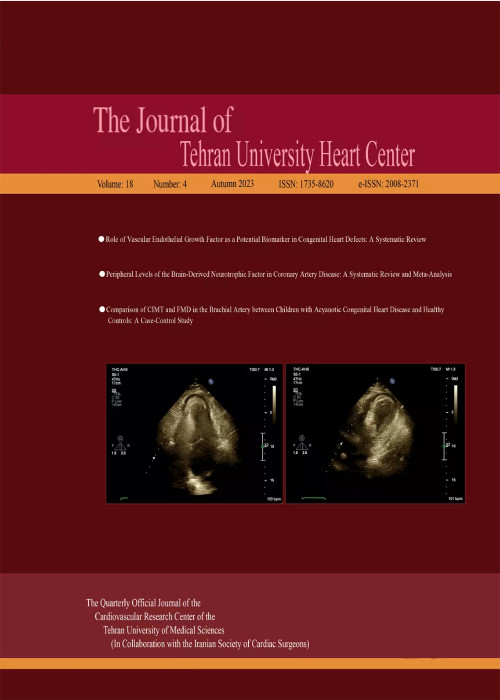Coronary Arteries Bypass Grafting Surgery in Elderly Patients
Author(s):
Abstract:
Background
The incidence of coronary artery bypass grafting surgery (CABG) in elderly patients has been increasing. There are contradictory reports on the early outcome of elderly coronary artery patients as compared with their young counterparts. We designed this retrospective study to address this issue.Methods
We retrospectively analyzed the results of 1489 on–pump CABG cases performed at our hospital during a 4.5-year period. Perioperative data such as demographic, medical, clinical, operative, and postoperative variables were collected and compared between patients 70 years old or younger (Group A, n = 1164) and patients above 70 years of age (Group B, n = 325). Statistical analysis was performed using the t-test for the continuous and the X2 tests for the categorical variables. Significant variables according to the univariate analysis (X2 and t-test) were further analyzed using multivariate logistic regression analysis. Results
The variables of weight (P value < 0.001), preoperative PO2 (P value = 0.005), ejection fraction > 30% (P value = 0.001), body surface area (P value = 0.003), and hypercholesterolemia (P value = 0.007) were higher in Group A, whereas preoperative myocardial infarction (P value < 0.001), postoperative low cardiac output syndrome (P value = 0.019), emergent surgery (P value = 0.003), inotropic drug use (P value < 0.001), preoperative heparin use (P value < 0.001), re-exploration for bleeding (P value = 0.015), hospital stay (P value < 0.001), low ejection fraction (≤ 30%) (P value = 0.001), preoperative creatinine > 1.5 mg/dl (P value < 0.001), chronic obstructive pulmonary disease (P value < 0.001), intra-aortic balloon pump use (P value < 0.001), infection (P value < 0.001), pulmonary complications (P value < 0.001), atrial fibrillation (P value < 0.001), postoperative renal complications (P value < 0.001), and death (P value = 0.012) were more frequent in Group B. Conclusion
CABG in the elderly patients had certain surgical risks such as chronic obstructive pulmonary disease, preoperative myocardial infarction, emergent surgery, and death. Also, postoperative complications such as pulmonary complications, inotropic drug use, intra-aortic balloon pump use, and infection were more frequent in the elderly than in the younger patients.Language:
English
Published:
The Journal of Tehran University Heart Center, Volume:8 Issue: 2, Apr 2013
Pages:
76 to 88
magiran.com/p1140497
دانلود و مطالعه متن این مقاله با یکی از روشهای زیر امکان پذیر است:
اشتراک شخصی
با عضویت و پرداخت آنلاین حق اشتراک یکساله به مبلغ 1,390,000ريال میتوانید 70 عنوان مطلب دانلود کنید!
اشتراک سازمانی
به کتابخانه دانشگاه یا محل کار خود پیشنهاد کنید تا اشتراک سازمانی این پایگاه را برای دسترسی نامحدود همه کاربران به متن مطالب تهیه نمایند!
توجه!
- حق عضویت دریافتی صرف حمایت از نشریات عضو و نگهداری، تکمیل و توسعه مگیران میشود.
- پرداخت حق اشتراک و دانلود مقالات اجازه بازنشر آن در سایر رسانههای چاپی و دیجیتال را به کاربر نمیدهد.
In order to view content subscription is required
Personal subscription
Subscribe magiran.com for 70 € euros via PayPal and download 70 articles during a year.
Organization subscription
Please contact us to subscribe your university or library for unlimited access!


